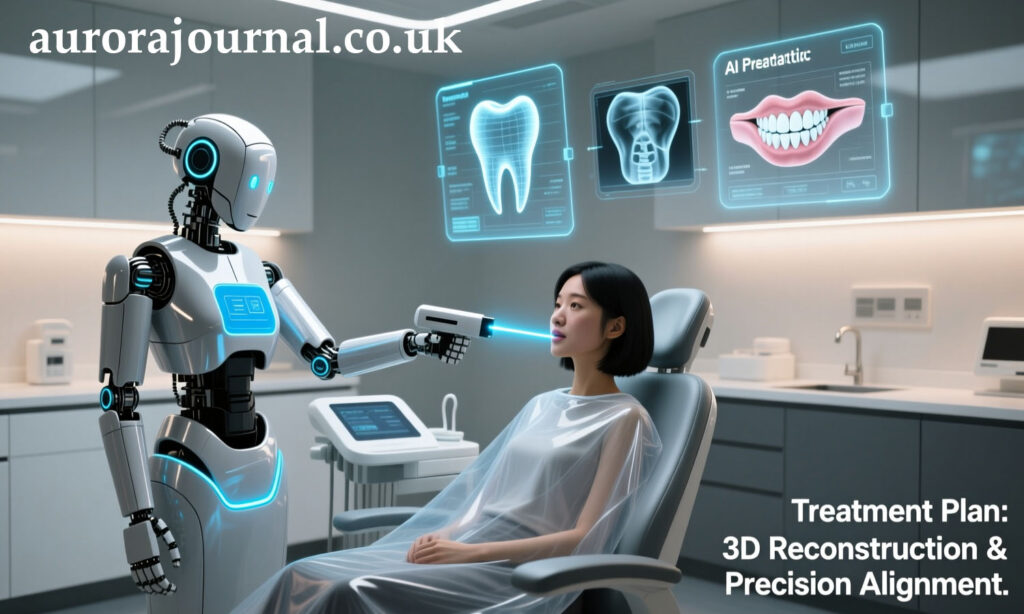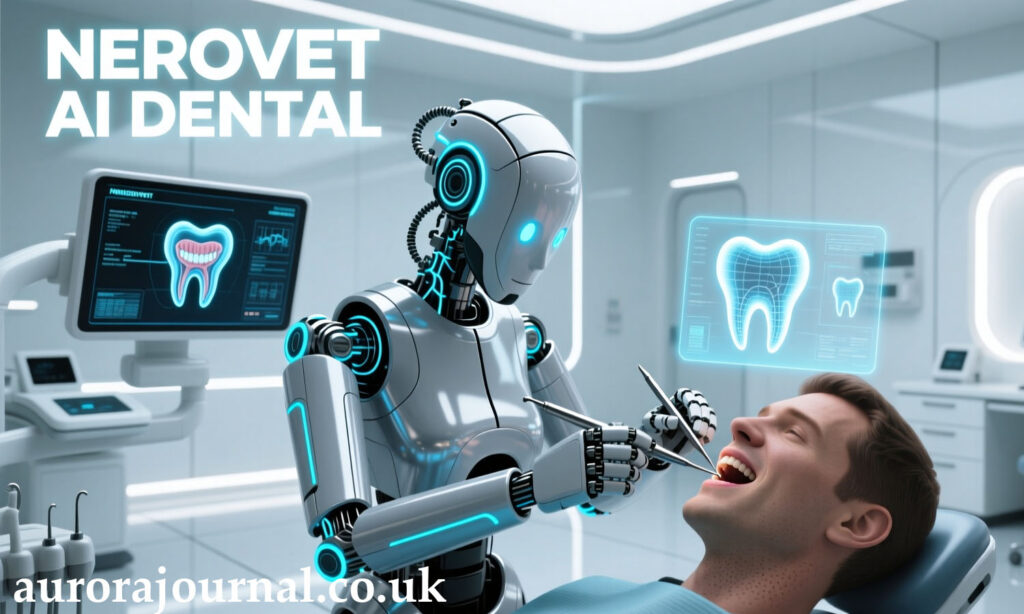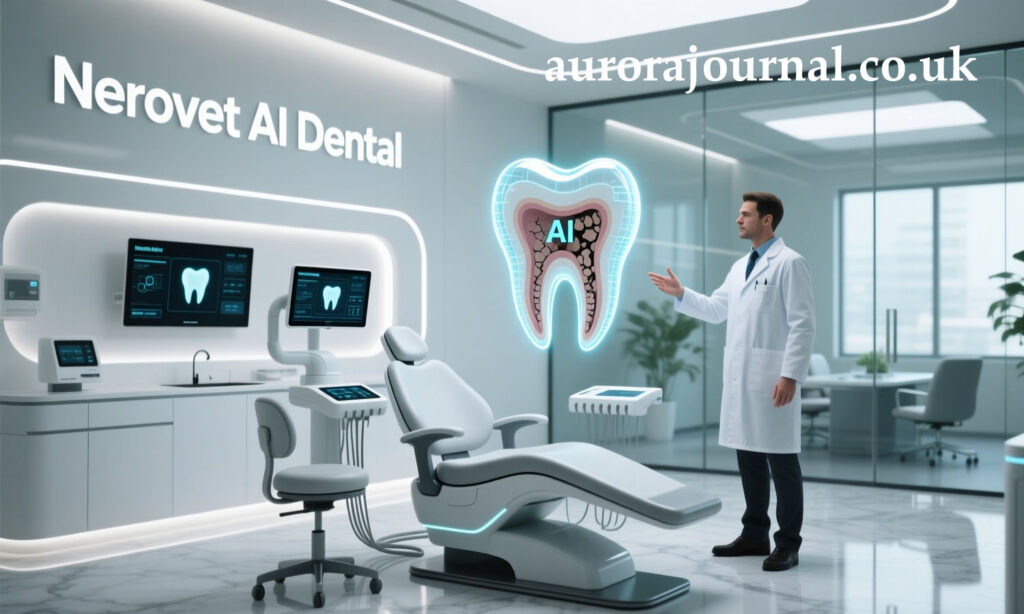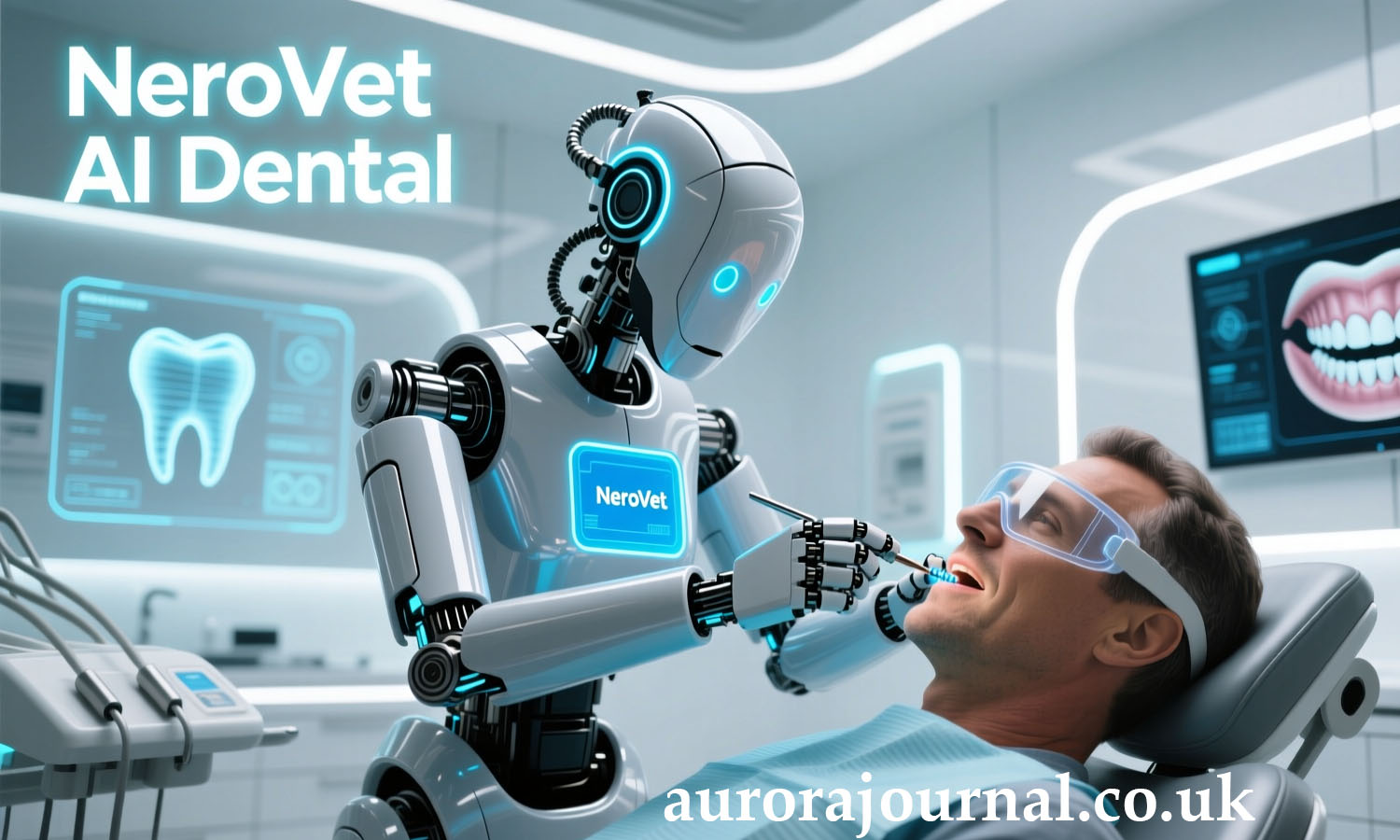In recent years, the dental field has witnessed a technological surge, and one of the most promising innovations is the advent of Nerovet AI Dental (also referred to as “nerovet AI dental” in some circles). This term encapsulates a range of advanced artificial-intelligence-powered systems designed to support dentists, hygienists, and practice staff in everything from imaging diagnostics to treatment planning, preventive care and patient engagement. The goal is to deliver dental care that is not only more accurate and efficient, but also more personalized, predictive and patient-friendly.
In this article, we will explore what Nerovet AI Dental actually is, how it works, what benefits and challenges it brings, where it is already being used, and what the future might hold. We’ll also address frequently asked questions to help dental professionals and patients alike understand the implications of this emerging technology.
What Is Nerovet AI Dental?
At its core, Nerovet AI dental refers to systems that combine machine learning, advanced image-analysis algorithms, large databases of dental/medical images and patient records, and predictive analytics—all aimed at improving oral-health care. According to multiple industry sources:
- Nerovet AI Dental platforms analyse X-rays, 3D scans, intraoral images and patient histories to detect dental issues earlier than might otherwise be possible.
- They support treatment planning by simulating outcomes, recommending personalised care pathways and helping dentists visualise complex procedures.
- They streamline administrative workflows—such as image processing, patient scheduling, risk-profiling and follow-up tracking—so that clinical teams can allocate more time to direct care.
Thus, when we use the keyword nerovet AI dental, we are referring not just to one narrow product, but to a broader class of AI-driven dental-care tools branded or generically described under this name.
People Read Also : Doge Software Licenses Audit HUD: A Complete Guide to Compliance, Security, and Optimization
How Does Nerovet AI Dental Work?

Let’s break down the major components and processes behind nerovet AI dental systems:
1. Data Acquisition & Imaging
Dental clinics acquire digital images—bite-wing and periapical X-rays, panoramic scans, cone-beam CTs, intra-oral camera pictures, and patient records. These form the raw input.
Some Nerovet AI tools claim processing times of under a few seconds and detection accuracies over 90 % in certain tasks.
2. Image & Pattern Recognition
Using convolutional neural networks (CNNs) or other deep-learning architectures, the system “reads” the images, identifies anatomical landmarks, highlights potential lesions (e.g., early caries, bone-loss in periodontitis, root fractures) and quantifies their severity.
3. Predictive Analytics & Risk Profiling
Beyond simply detecting existing issues, the system may compare a patient’s current data to large reference datasets, evaluate risk factors (genetics, prior treatment history, oral hygiene behaviour) and forecast likelihood of future issues—such as gum-disease progression or implant failure risk.
4. Treatment Planning Support & Visualisation
For complex cases (orthodontics, implants, cosmetic smile design), nerovet AI dental can simulate outcomes, guide the optimal angles/positions of implants or aligners, and produce visual aids for patient communication.
5. Workflow Integration & Administration
The technology also automates ancillary tasks: image sorting, report generation, patient scheduling, reminders, follow-up monitoring, and may integrate into the practice management software. This improves operational efficiency.
6. Continuous Learning & Improvement
Because these systems are built on machine-learning frameworks, they get better over time: more data → better models → higher accuracy, fewer false positives/negatives, improved recommendations.
Key Benefits of Nerovet AI Dental

Here are some of the major upsides to incorporating nerovet AI dental tools in a dental practice or for a patient’s care:
- Improved diagnostic accuracy: Subtle pathologies may be detected earlier—reducing oversight of early decay, hidden fractures, bone loss, etc.
- Faster treatment planning: Rather than waiting for manual review or second opinions, AI-aided analysis gives instant or very rapid feedback.
- Personalised care: Patients receive customized treatment plans based on their unique data and risk profile, not just a “one-size-fits-all” approach.
- Better patient engagement: With AI-generated visuals, overlays and simulations, patients can understand their conditions and proposed treatments more clearly; this builds trust and compliance.
- Operational efficiency: Clinics may reduce administrative burdens, save time on image reviews, integrate workflows more smoothly and allow more focus on patient interaction.
- Preventive orientation: With predictive analytics, the system shifts dentistry from reactive (treat damage) to proactive (prevent damage).
Challenges & Considerations with Nerovet AI Dental
Despite the promise, adoption of nerovet AI dental systems isn’t without hurdles:
- Data privacy and security: Handling sensitive dental/medical records and imaging requires strict safeguards (GDPR, HIPAA etc). Clinics must ensure compliance.
- Integration cost and training: For smaller practices especially, the cost of hardware/software acquisition, staff training and workflow change may be non-trivial.
- Over-reliance on AI: AI is a tool – final clinical decision-making must still rest with trained dental professionals. Blindly trusting an algorithm is risky.
- Bias in training data: If the AI was trained on limited demographic samples, certain populations or rare conditions may not be accurately detected.
- Patient perception / trust: Some patients may feel uneasy about “machines” being involved in their care or worry about impersonality. Educating patients is key.
- Regulatory and ethical frameworks: As AI in dentistry is still evolving, legislation, reimbursement pathways and standardisation are still catching up.
Real-World Applications of Nerovet AI Dental

Here are some examples of how nerovet AI dental is being deployed, or where potential use-cases are crystallising:
- A dental clinic reported that after implementing AI imaging tools they identified early-stage cavities in 40 % more patients compared to traditional exams.
- An orthodontic practice used AI simulations to reduce treatment time for aligners by approximately 20 %.
- A rural clinic leveraged AI-driven diagnostics to identify gum disease earlier than would have been practical with manual screenings alone.
- Education and training settings are using Nerovet AI Dental tools to support students—helping them see annotated images, practice case reviews, and build diagnostic confidence.
Implementation Guide: How Dental Practices Can Adopt Nerovet AI Dental
If a practice is considering integrating nerovet AI dental, here are key steps and tips:
- Assess readiness: Evaluate existing imaging equipment, digital infrastructure, data storage/security and staff tech-savviness.
- Vendor evaluation: Select a provider of Nerovet AI Dental (or equivalent) with strong track record, transparent algorithm performance, compliance certifications and good support.
- Pilot phase: Implement AI tools on a limited basis (e.g., for diagnostic support only) to monitor workflow impact, accuracy, patient feedback and cost-benefit.
- Training & protocols: Ensure that dentists, hygienists and support staff are trained not only in how to use the tool but in how to interpret outputs, integrate them into decision-making and communicate with patients.
- Workflow redesign: Adjust practice workflows to incorporate the AI-driven steps (e.g., image upload → AI analysis → dentist review → patient consult) without adding bottlenecks.
- Monitor performance: Track key metrics—diagnostic time, treatment-acceptance rates, patient satisfaction, operational efficiency, ROI. Adjust accordingly.
- Patient communication: Develop clear messaging for patients: what the technology is, how it helps, how their data is protected, and that the dentist remains in charge.
- Continuous improvement: Keep the system updated, feed new case data back (if allowed), review any false positives/negatives and adjust protocols to maintain high accuracy.
The Future of Nerovet AI Dental
What can we expect in the coming years from nerovet AI dental?
- Chairside real-time diagnostics: AI systems embedded directly in imaging equipment, providing instant overlays and recommendations as the dentist examines the patient.
- Wearable/mouth-sensor integration: Data from smart toothbrushes, intraoral sensors and home-care devices may feed into Nerovet systems to monitor oral-health risk between visits.
- Tele-dentistry plus AI: Remote consultations amplified by AI diagnostics—valuable for underserved or rural areas.
- Robotics and AI-guided surgery: In implantology or microsurgery, AI may guide robots or surgical instruments to perform ultra-precise interventions.
- Predictive lifelong oral-health modelling: Based on a patient’s data, genetics, behaviour and treatment history, Nerovet may forecast decades-ahead dental risk, enabling truly preventive-first care.
- Global access via mobile platforms: AI-driven dental screening apps could allow wider access to preliminary diagnostics in low-resource settings.
- Insurance and reimbursement evolution: As evidence accumulates, insurers may begin rewarding practices that adopt AI-supported preventive dentistry for lowering long-term costs.
Conclusion
The era of nerovet AI dental represents a significant shift in how dental care can be delivered: faster, smarter, more personalised and proactive. For dental practices willing to invest in the change—and for patients who value advanced diagnostics—this technology offers considerable promise. However, successful adoption requires thoughtful planning, solid training, and an emphasis on maintaining the human-touch that remains the essence of good oral-health care.
Frequently Asked Questions (FAQs)
Q1. What is Nerovet AI Dental and how does it differ from standard dental imaging?
A: Nerovet AI Dental refers to AI-powered systems that analyse dental images and patient data using machine learning to support diagnosis, treatment planning and workflow. Unlike standard imaging which relies solely on human interpretation, Nerovet adds pattern recognition, predictive analytics and personalised insights.
Q2. Is Nerovet AI Dental safe for patients?
A: Yes — the technology supports, but does not replace, the clinical judgment of a trained dentist. Adoption typically involves validated models, secure data handling and clinical oversight. That said, patient-data privacy, algorithm transparency and dentist oversight are crucial.
Q3. Can any dental clinic adopt Nerovet AI Dental?
A: Most modern clinics with digital imaging and practice-management software can adopt it. However, smaller or resource-limited clinics may face cost, training or infrastructure hurdles. Implementation planning is recommended.
Q4. What are the costs and ROI of implementing Nerovet AI Dental?
A: Costs vary greatly depending on scale, vendor and services. The return on investment comes from improved diagnostic accuracy, fewer repeated treatments, higher patient satisfaction and streamlined workflows. Many practices report benefits within months.
Q5. How does Nerovet AI Dental affect the role of the dentist? Will it replace them?
A: No—dentists remain central. Nerovet AI Dental augments the dentist’s capabilities by providing data insights and automating tasks, but the final decisions, hands-on treatment and patient relationships are still in the human domain.
Q6. How accurate is Nerovet AI Dental?
A: While accuracy varies by system and task, some tools claim detection accuracies above 90 % for specific conditions (e.g., caries detection in X-rays). However, no system is perfect—clinical oversight remains required.
Q7. What about patient privacy and data security?
A: Data privacy is a major concern. Clinics must ensure compliance with relevant regulations (e.g., GDPR in Europe, HIPAA in the U.S.), secure storage, encrypted transmission and clear consent procedures before using AI systems.
Q8. What future developments should patients ask about regarding Nerovet AI Dental?
A: Patients may ask their dentist: Does your practice use AI-supported diagnostics? How is my data protected? Can I see the AI-generated visuals? What happens if the AI suggests something I don’t agree with? These questions help foster transparency and trust.
